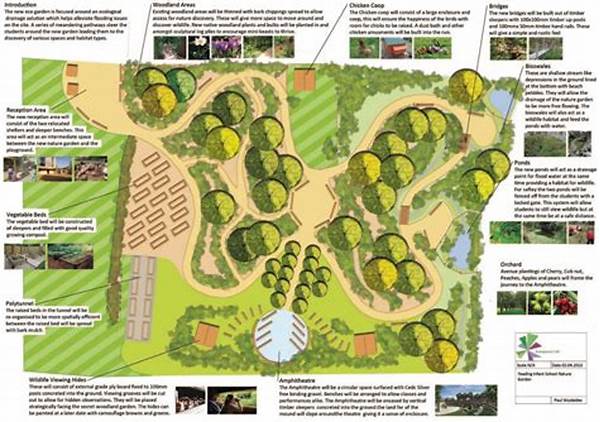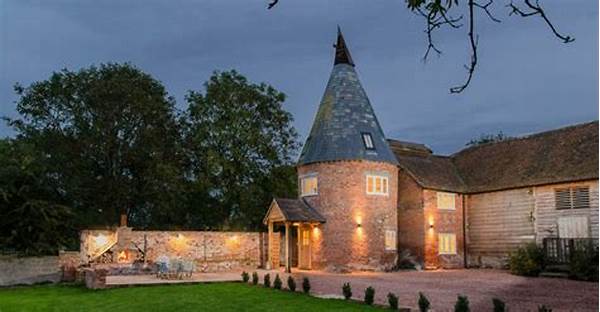Hey there, nature lovers and green thumbs! 🌿 Ever wondered how we can keep our beautiful countryside lush and vibrant while making sure our furry and feathered friends feel right at home? That’s where wildlife-friendly rural landscape planning comes into play. Let’s dive into how we can make our landscapes work for us and for wildlife!
Read Now : Luxury Romantic Getaways For Couples
The Importance of Wildlife-Friendly Rural Landscape Planning
Creating a wildlife-friendly rural landscape is like crafting a giant, welcoming quilt that provides habitat and resources for all kinds of creatures. Think of it as a way to peacefully coexist with nature, ensuring that rural areas are not just human-centric but also thriving with biodiversity. It’s about designing spaces where people, plants, and animals can all flourish together.
In wildlife-friendly rural landscape planning, it’s crucial to understand the natural characteristics of the area. This means taking note of existing flora and fauna and how they interact with the environment. It’s about choosing native plants that offer food and shelter to local wildlife while requiring less maintenance. Imagine fields of wildflowers buzzing with bees or fruit trees feeding flocks of birds—it’s not just beautiful; it’s beneficial.
But it’s not just about planting the right things. Wildlife-friendly rural landscape planning also involves creating corridors and connections between different habitats. These green pathways allow animals to safely travel, find food, and reproduce. Ultimately, the goal is to build a resilient ecosystem that can support itself even as human activities continue.
Key Elements of Wildlife-Friendly Rural Landscape Planning
1. Native Plant Selection
By opting for native species, wildlife-friendly rural landscape planning creates a sustainable habitat that needs less water and care, naturally attracting local animals.
2. Water Sources
Including ponds or streams in your plan provides essential drinking and bathing spots for wildlife, enriching the rural ecosystem’s vitality.
3. Habitat Corridors
Wildlife-friendly rural landscape planning often involves creating passageways for animals, ensuring they can roam without encountering obstacles.
4. Natural Predators
Encouraging the presence of natural predators as part of wildlife-friendly rural landscape planning helps maintain a balanced ecosystem.
5. Education and Community Engagement
Spreading awareness and involving locals in wildlife-friendly rural landscape planning fosters a sense of ownership and responsibility for natural conservation.
Planning for Our Furry and Feathered Friends
When embarking on wildlife-friendly rural landscape planning, it’s essential to get the community involved. A shared vision for a green and vibrant rural environment has the power to spark action and investment. It’s about building partnerships between farmers, conservationists, and local governments to undertake projects that benefit both humans and wildlife.
Read Now : All-inclusive Resorts With Waterpark Access
Moreover, wildlife-friendly rural landscape planning can be a boost for local economies. Eco-tourism and agri-tourism provide unique opportunities for people to experience firsthand the benefits of a well-planned landscape. Imagine offering guided walks through flourishing meadows or workshops on building birdhouses. These activities don’t just generate income; they build bonds with nature.
It’s essential to celebrate the small wins in wildlife-friendly rural landscape planning. Whether it’s spotting a family of deer or hearing the call of rare birds, these moments remind us why the effort is worth it. By nurturing our natural surroundings, we’re not just preserving the beauty of our planet—we’re enhancing the quality of life for future generations.
Wildlife Corridors and Connectivity
Creating wildlife corridors is a fascinating aspect of wildlife-friendly rural landscape planning. These paths allow various animal species to move safely across different areas, aiding in reproduction and access to resources. Imagine these corridors as green highways for critters big and small, linking habitats that would otherwise be isolated by human development.
Plans for wildlife-friendly rural landscape planning also focus on connectivity between different land parcels. This connectivity is essential for species that migrate or need large territories to thrive. For example, hedgerows and green bridges are designed to act like stepping stones, enabling animals to navigate human landscapes without getting into dangerous situations.
Wildlife-friendly rural landscape planning encourages planners to think about both the big picture and the details. From the placement of individual plants to the layout of entire regions, every choice contributes to a web of life that supports biodiversity. Community members can engage in activities such as planting days or monitoring wildlife activity, fostering a deep appreciation for the natural world around them.
Community Benefits of Wildlife-Friendly Planning
One significant advantage of wildlife-friendly rural landscape planning is its positive impact on community health and well-being. Access to green spaces has been shown to reduce stress, improve mood, and encourage physical activity. When rural areas are planned with wildlife in mind, these places become thriving hubs of nature that enhance everyone’s quality of life.
Furthermore, involving the community in wildlife-friendly rural landscape planning can lead to increased environmental awareness and responsibility. Residents become stewards of their local environment, participating in conservation initiatives and protecting their unique natural heritage. This engagement not only improves the local ecosystem but also builds a strong sense of community.
Finally, wildlife-friendly rural landscape planning provides educational opportunities for all ages. Schools can use these natural spaces as living laboratories, teaching students about ecosystems, conservation, and sustainability. These hands-on experiences foster a lifelong respect and love for nature, ensuring that future generations continue to care for and protect wildlife.
Summary of Wildlife-Friendly Rural Landscape Planning
In summary, wildlife-friendly rural landscape planning is all about harmonizing our needs with those of the natural world. By incorporating native plants, creating water sources, and ensuring habitat connectivity, we can craft vibrant environments that support a rich tapestry of life. It’s a strategy that benefits not just the planet, but also the people who call these landscapes home.
Building community engagement through wildlife-friendly rural landscape planning ensures that efforts are sustainable and impactful. Whether it’s through educational programs, community planting events, or eco-tourism initiatives, getting everyone on board enriches the experience and strengthens local bonds. Ultimately, these efforts create a legacy of environmental stewardship that future generations can appreciate and build upon.
Wildlife-friendly rural landscape planning is more than just a conservation tactic; it’s a lifestyle choice that honors the delicate balance of life on Earth. By dedicating ourselves to creating spaces where nature can thrive alongside human development, we’re ensuring a future where both can prosper. Let’s embrace the journey towards a greener, more sustainable future together!



